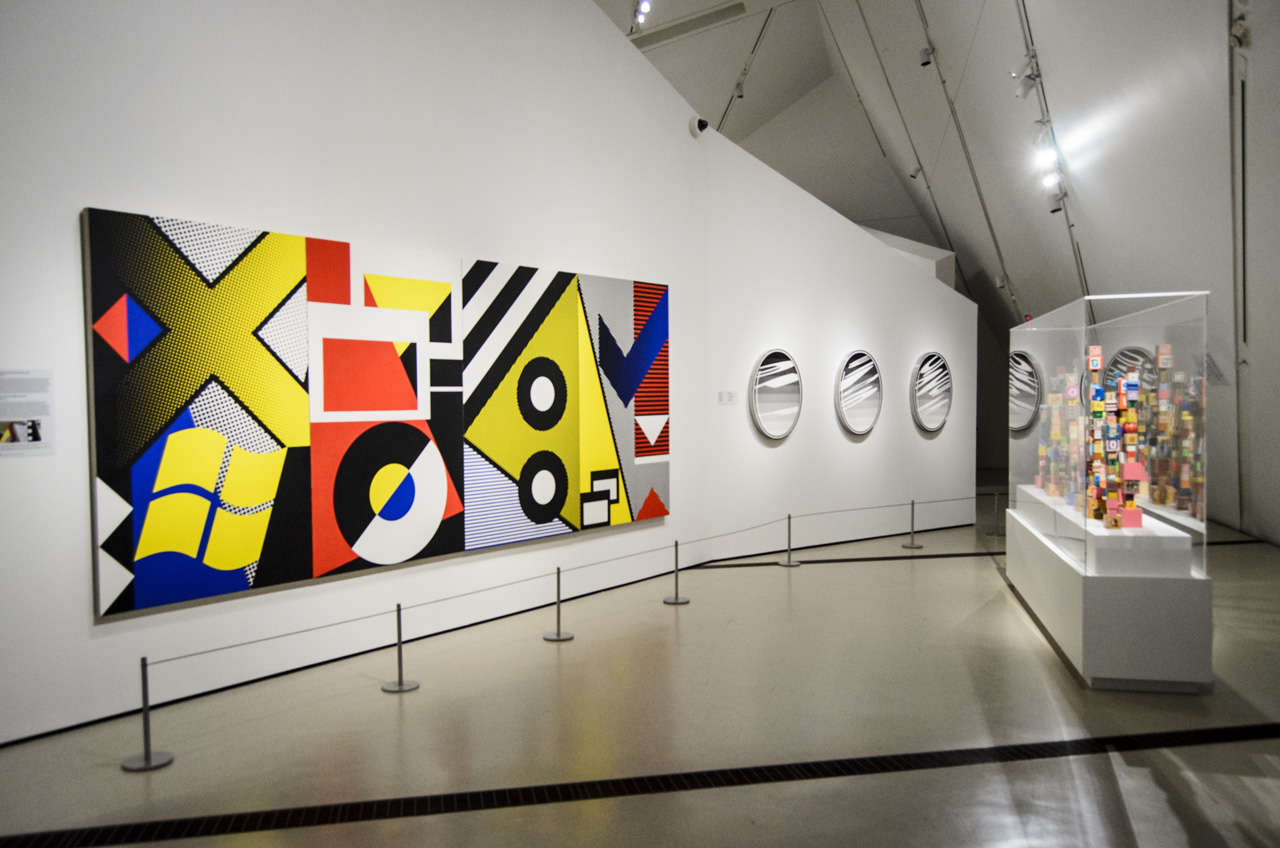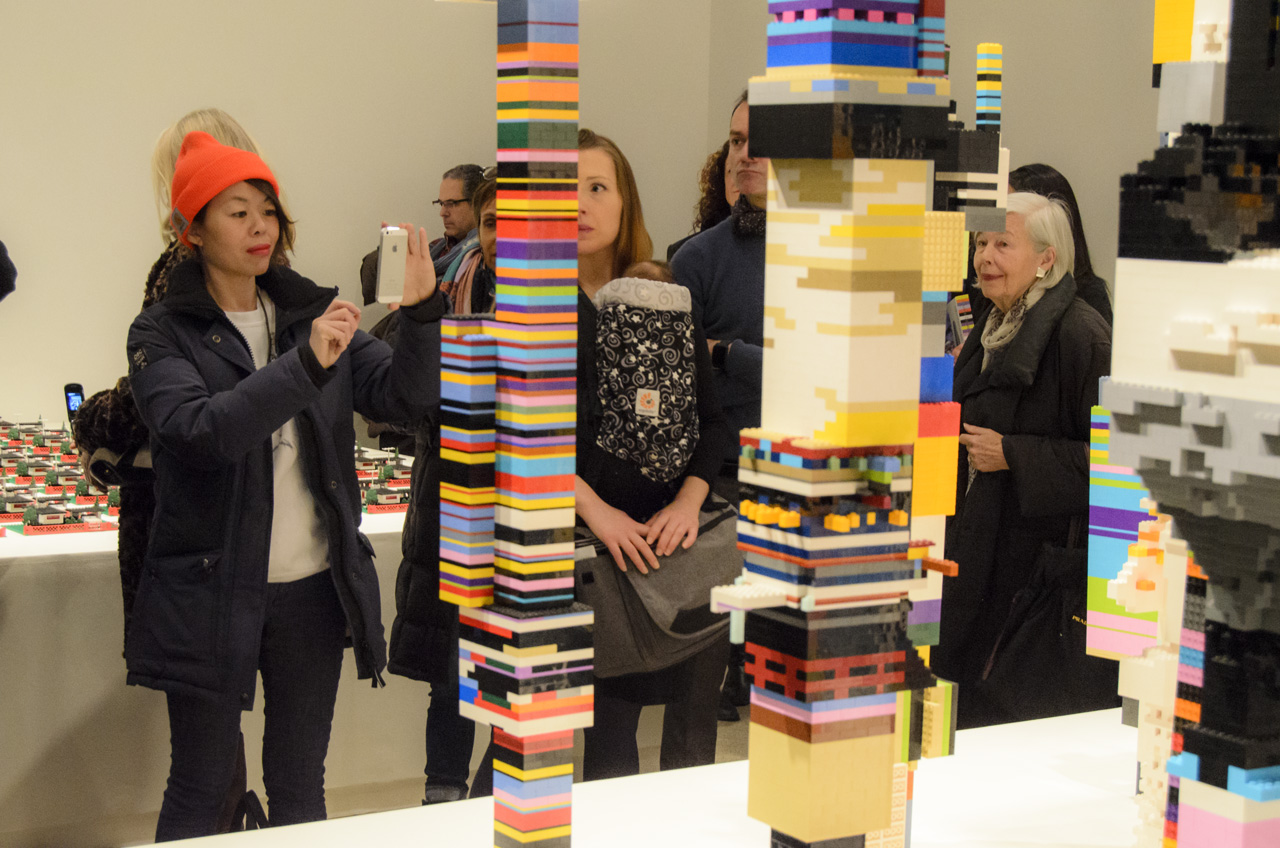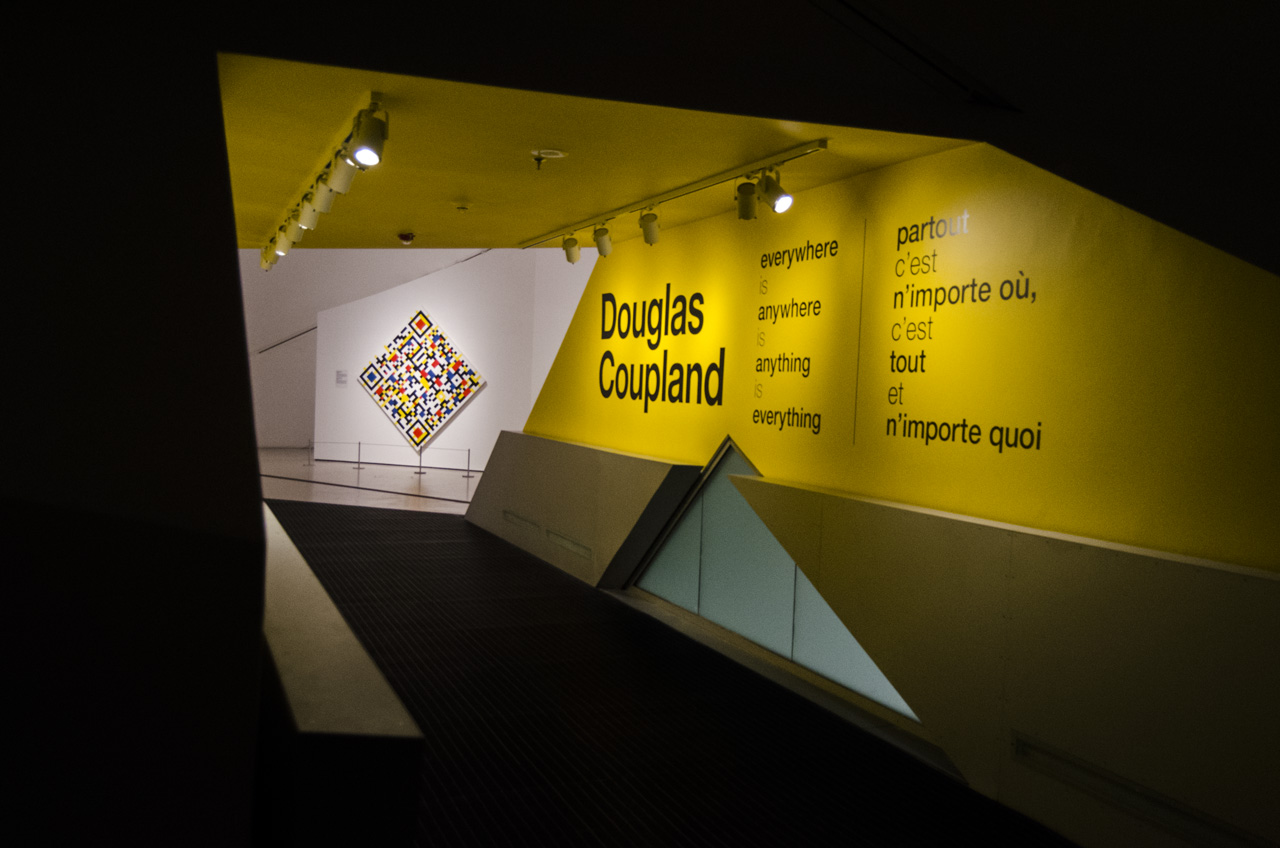 Entrance to Douglas Coupland’s show at the ROM
Entrance to Douglas Coupland’s show at the ROM
 David Liss, MOCCA artistic director and curator, discusses Douglas Coupland’s artworks at the members’ preview of the show
David Liss, MOCCA artistic director and curator, discusses Douglas Coupland’s artworks at the members’ preview of the show
Much has been written about the importance of Douglas Coupland’s show everywhere is anywhere is anything is everything, so large an exhibition that it had to be split between two venues in Toronto: the MOCCA and the ROM. A mesmerizing collection of thought-provoking and stunningly beautiful artworks, the show is a must-see both as a tour-de-force in contemporary Canadian art and as a means to explore the politics of display in a museum.
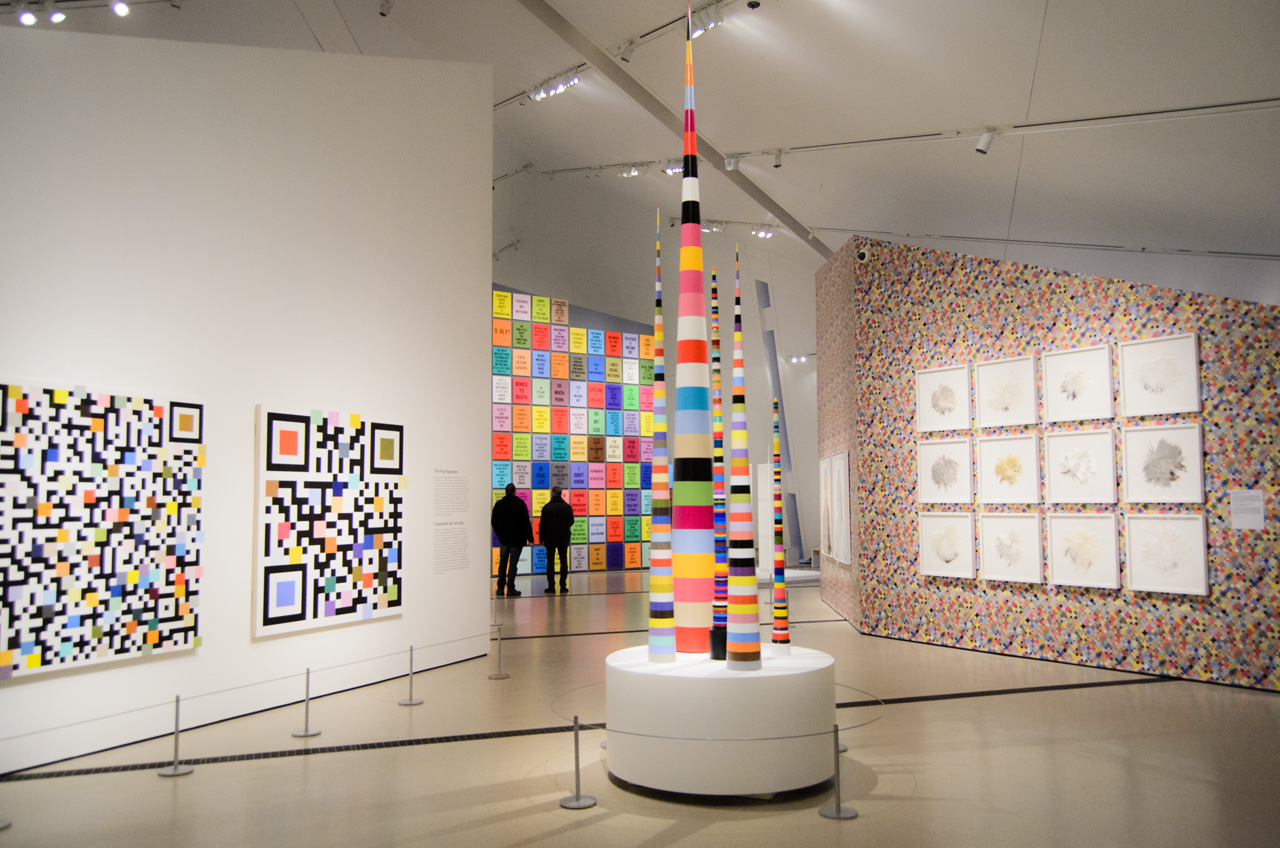 Installation view of the ROM portion of the Douglas Coupland’s show
Installation view of the ROM portion of the Douglas Coupland’s show
 Douglas Coupland, “Brick Wall” (2013) at MOCCA
Douglas Coupland, “Brick Wall” (2013) at MOCCA
While seeing the Coupland show in a single venue would certainly constitute a unique and powerful experience – just imagine a space filled with all these works, similarly to how some of Coupland’s installations are filled with objects, – the choice to split the exhibition between two iconic Toronto venues adds a dimension fitting to the overarching theme of the show, which focuses on the inner workings of modernity and its North American and, in particular, Canadian institutions.
 Douglas Coupland, “Pop Heads” (2012), ROM
Douglas Coupland, “Pop Heads” (2012), ROM
 Douglas Coupland, “Towers” (2014) at MOCCA
Douglas Coupland, “Towers” (2014) at MOCCA
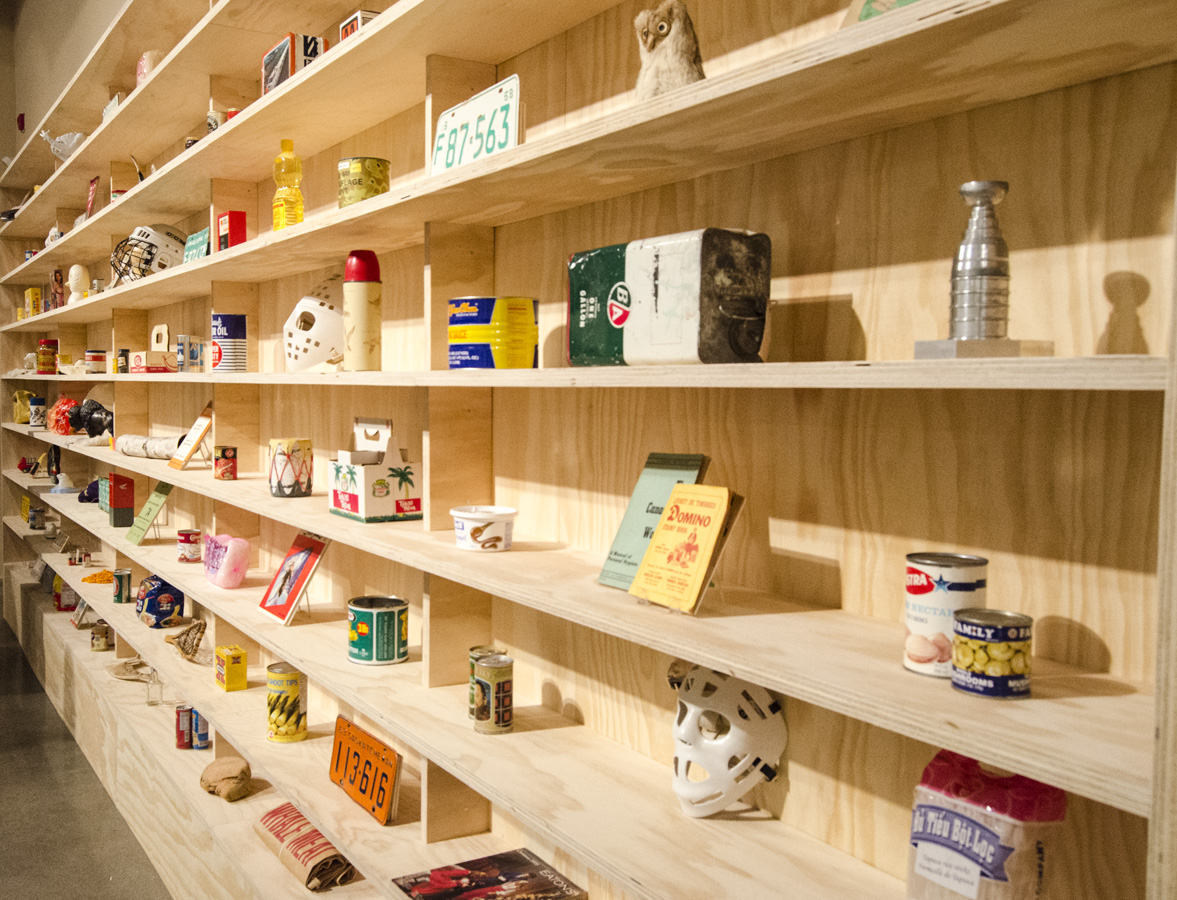 Douglas Coupland, “The National Pantry” (detail, 2014) at the MOCCA
Douglas Coupland, “The National Pantry” (detail, 2014) at the MOCCA
The strong aesthetic consistency of the artworks in the show virtualizes the distances between the two venues, rendering them complementary to each other. Although the show itself is not disjointed by the physical separation, the little differences between the ROM and the MOCCA become all the more apparent and are of great interest for they are revelatory of the character of each institution.
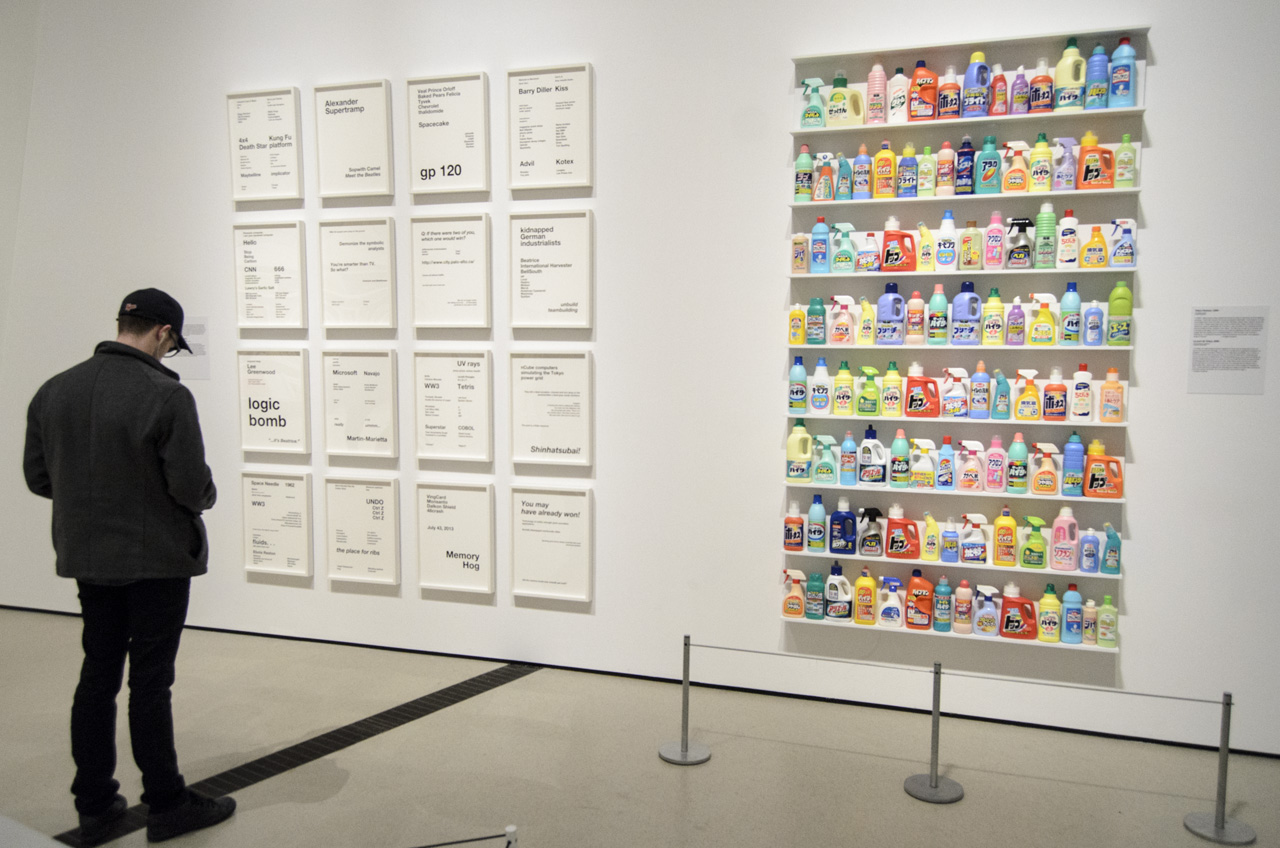 Visitor in front of Douglas Coupland’s “Word Clouds” and “Tokyo Harbour” at the ROM
Visitor in front of Douglas Coupland’s “Word Clouds” and “Tokyo Harbour” at the ROM
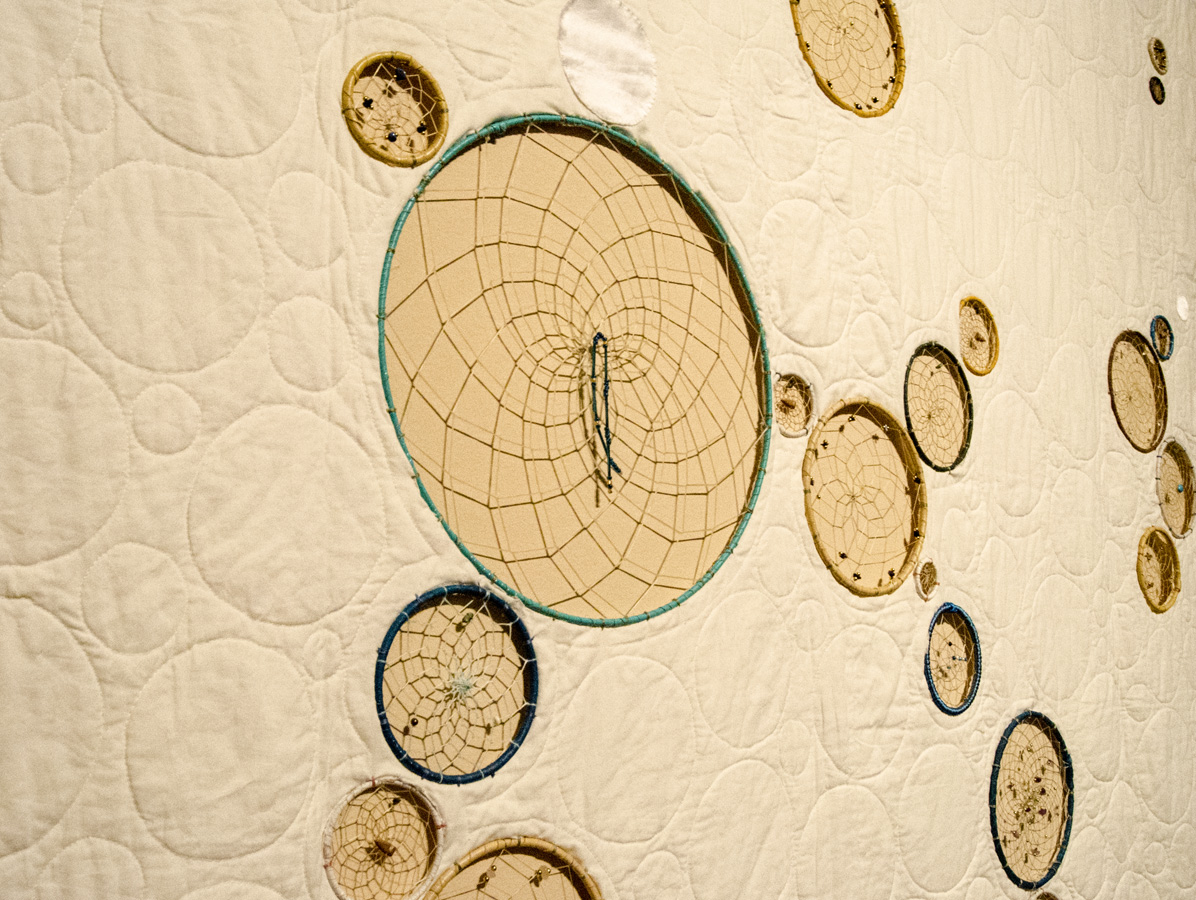 Douglas Coupland, “Dreamcatcher Blanket” (detail, 2003) at the MOCCA
Douglas Coupland, “Dreamcatcher Blanket” (detail, 2003) at the MOCCA
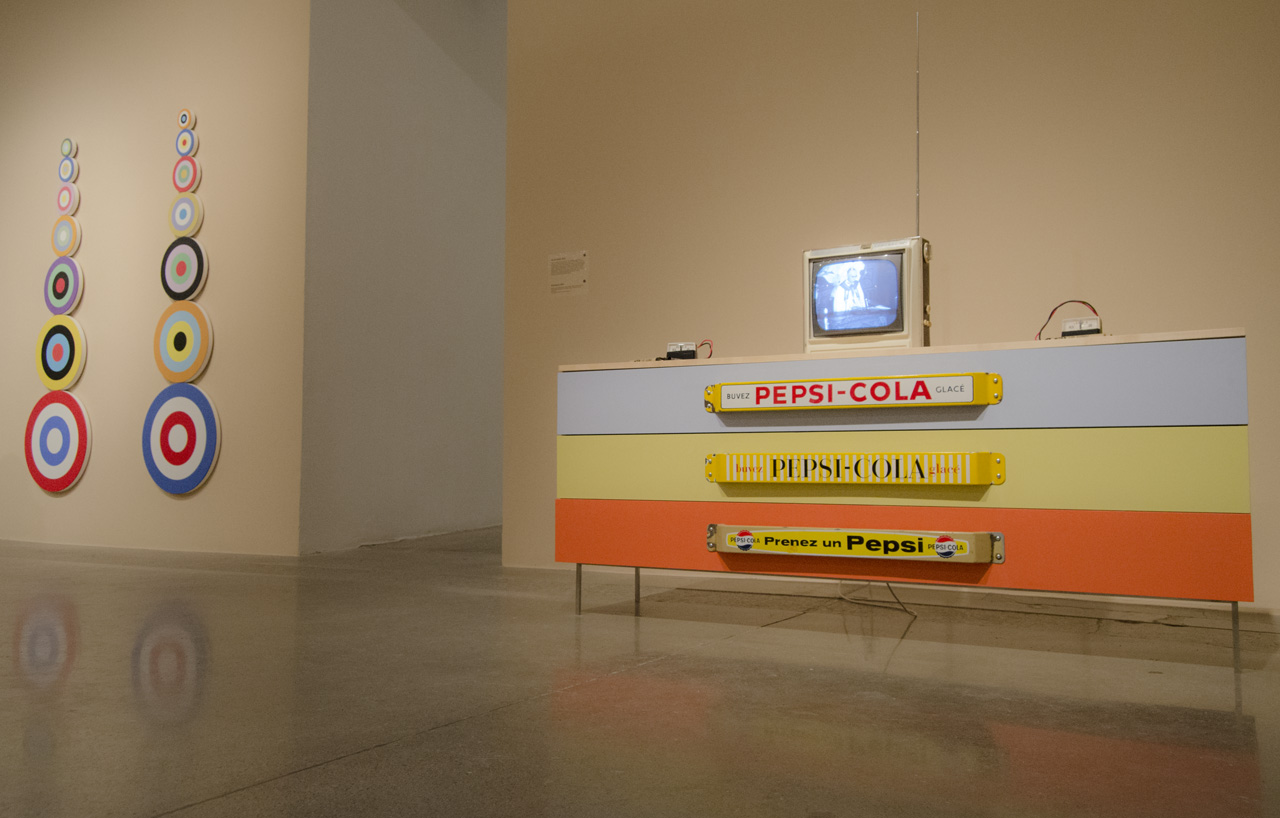 Douglas Coupland, “FLQ Hutch” (right, 2013) at the MOCCA
Douglas Coupland, “FLQ Hutch” (right, 2013) at the MOCCA
A most striking difference is in the labels. The ROM supplements the exhibition with prominent and detailed explanations concerning series of works or specific sections of the exhibition, highlighting relevant biographic information or quoting the artist. The MOCCA, by contrast, mostly provides only summary archival information regarding title, date and materials used, with occasionally a phrase regarding the assembly process for a particular work, without giving any interpretative account or biographical background. Either approach is justifiable, with the former grounding the artworks in factual information – historical or biographical, – and the latter granting the viewer greater freedom of interpretation of what the installations are evoking. The two venues can be visited in either order, with lay visitors who first went to the MOCCA being able to validate their impressions at the ROM, or visitors first guided by the ROM’s interpretation being able to critically reevaluate that assessment at the MOCCA.
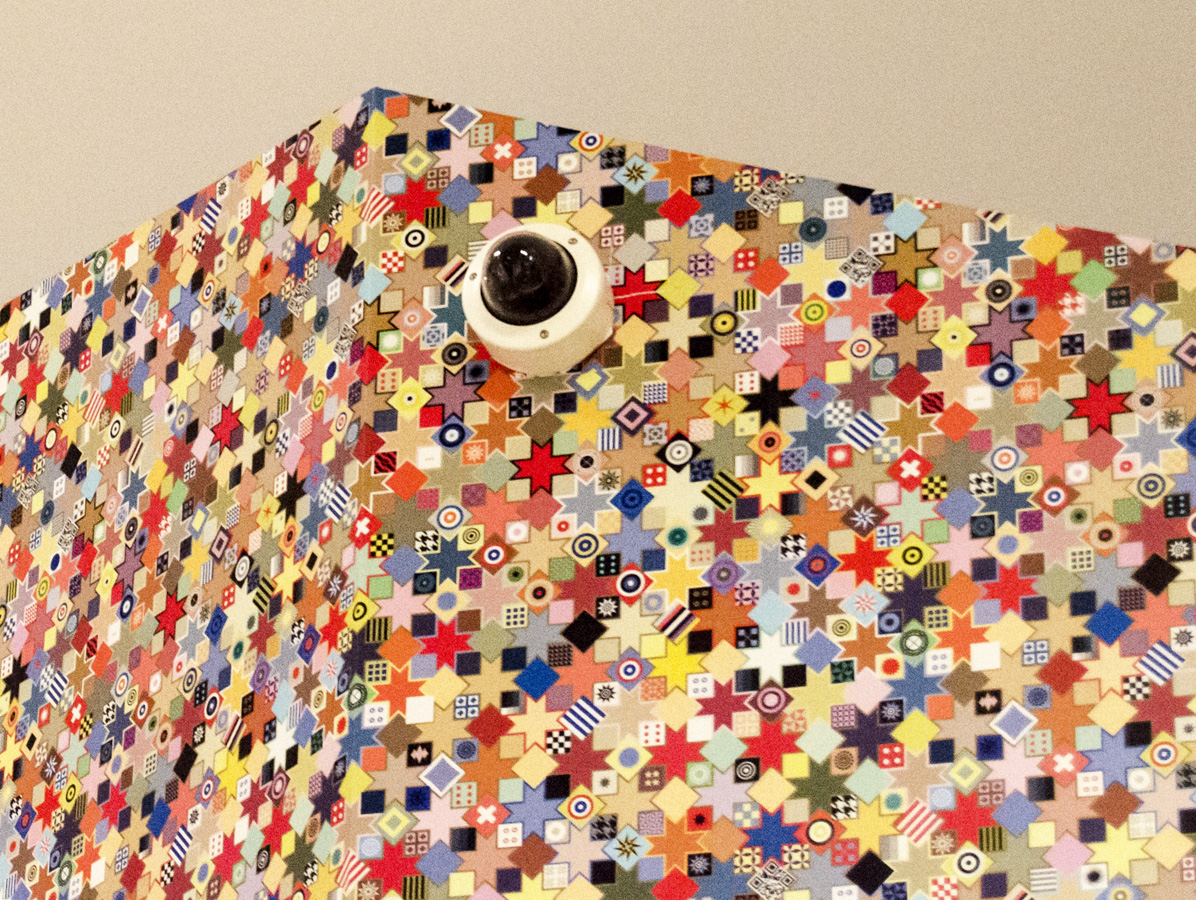 A ROM museum surveillance camera blends into the custom wallpaper “Aubusson” (2010-2013) designed by Douglas Coupland.
A ROM museum surveillance camera blends into the custom wallpaper “Aubusson” (2010-2013) designed by Douglas Coupland.
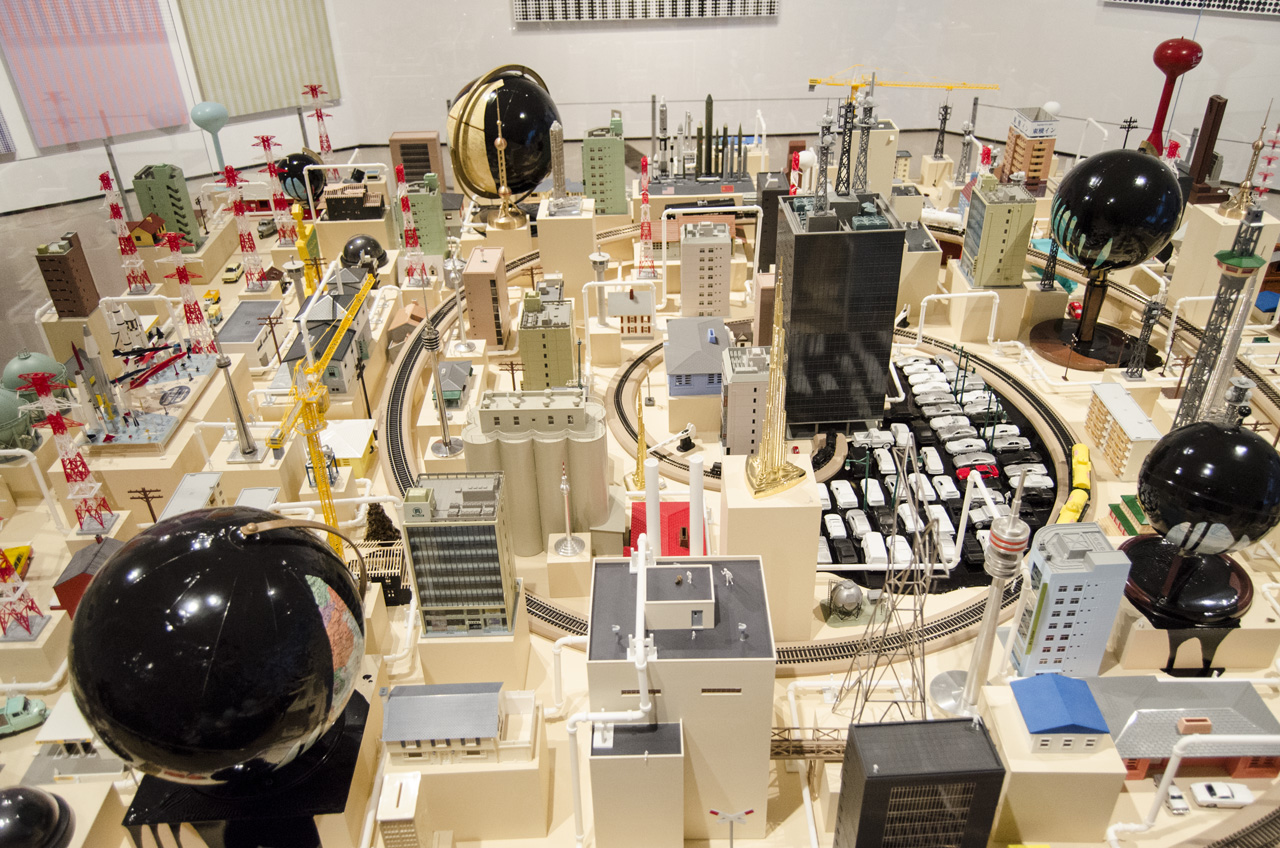 Douglas Coupland, “The World” (detail, 2013-2014) at the ROM
Douglas Coupland, “The World” (detail, 2013-2014) at the ROM
While it may be tempting to link the choice of supplying the viewer with more factual data to a more traditional outlook, the ROM does in fact embrace modernity, with tablets distributed throughout the space offering additional resources to visitors and with artworks benefiting from the futuristic architecture of the Crystal, in contrast to the more austere setting at the MOCCA. The ROM even playfully integrates its surveillance cameras into the exhibition, reminding the viewer of surveillance cameras part of “The World” installation. Together, the two venues put each other’s modes of display in perspective, opening a discussion regarding the contemporary museum experience and permitting a more engaged approach to the show as a whole.
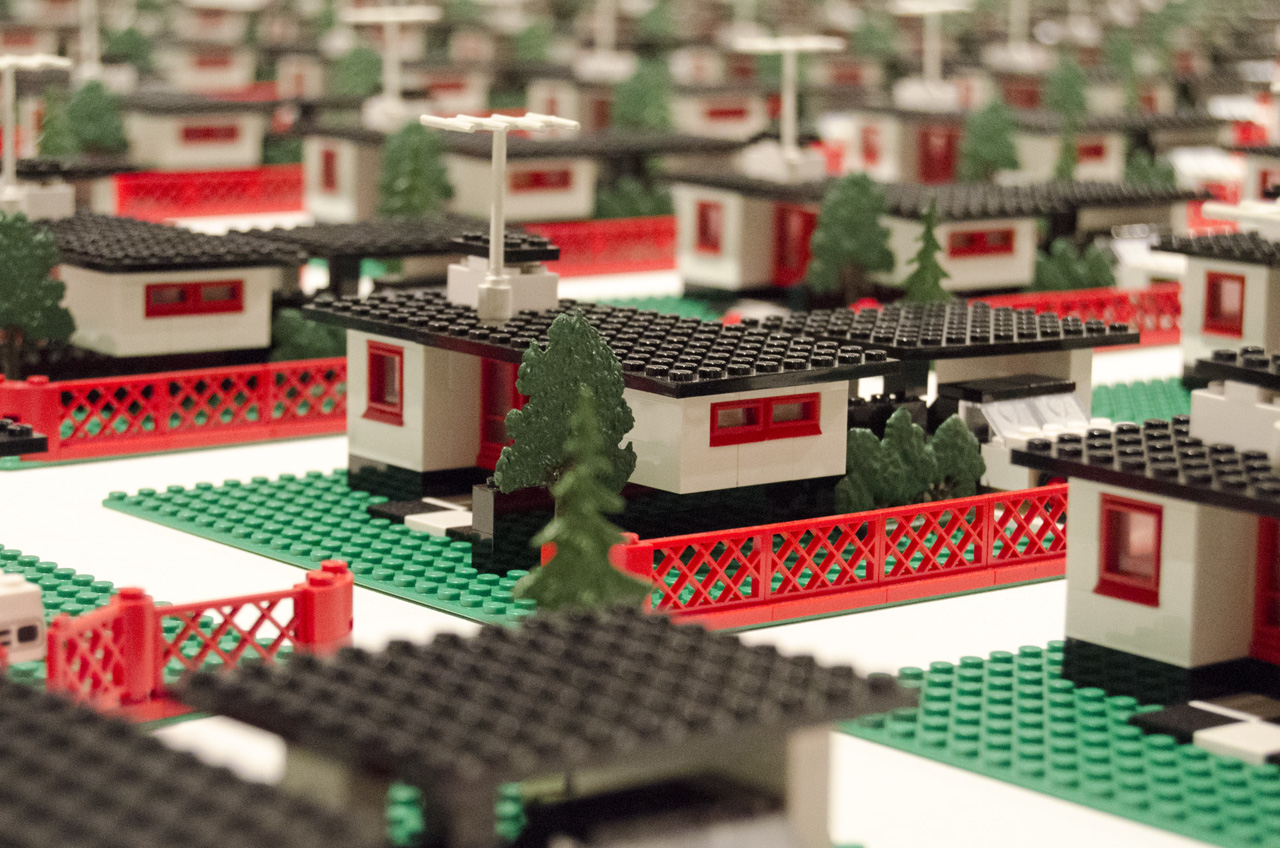 Douglas Coupland, “345 Modern House” (detail, 2014) at the MOCCA
Douglas Coupland, “345 Modern House” (detail, 2014) at the MOCCA
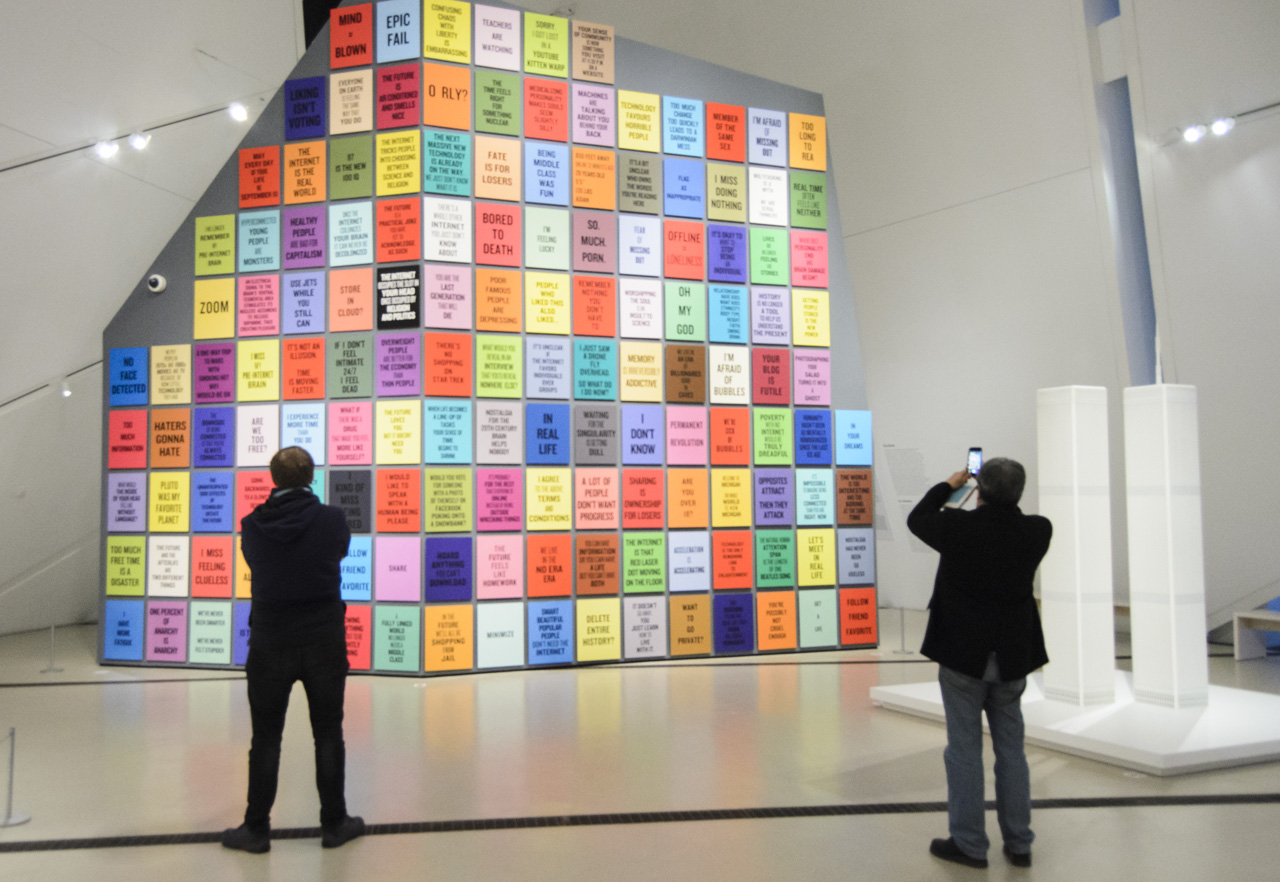 Visitor at the ROM (photography encouraged)
Visitor at the ROM (photography encouraged)
A concern with the museum experience is most apparent in activities directed at the social media. The show stands out for its catchy “photography encouraged” notice, which came as a surprise to some ROM workers used to the old-fashioned prohibition of photography in temporary expositions. In fact, the ROM institutionalized this imperative with a meticulous hoarding of visitors’ photographs, similarly to how Douglas Coupland himself hoarded objects for his installations. The entire collection of images posted under the #CouplandTO hashtag can be seen in a dedicated online gallery http://gallery.couplandto.ca/. The MOCCA offers an even more creative counterpart with the “Growing up Utopian Family Photo Album” project soliciting childhood photographs from the public to make a photo album that will be presented to Douglas Coupland at the end of the exhibition. What to know more? Come down to the MOCCA! There is still time to contribute to either initiative.
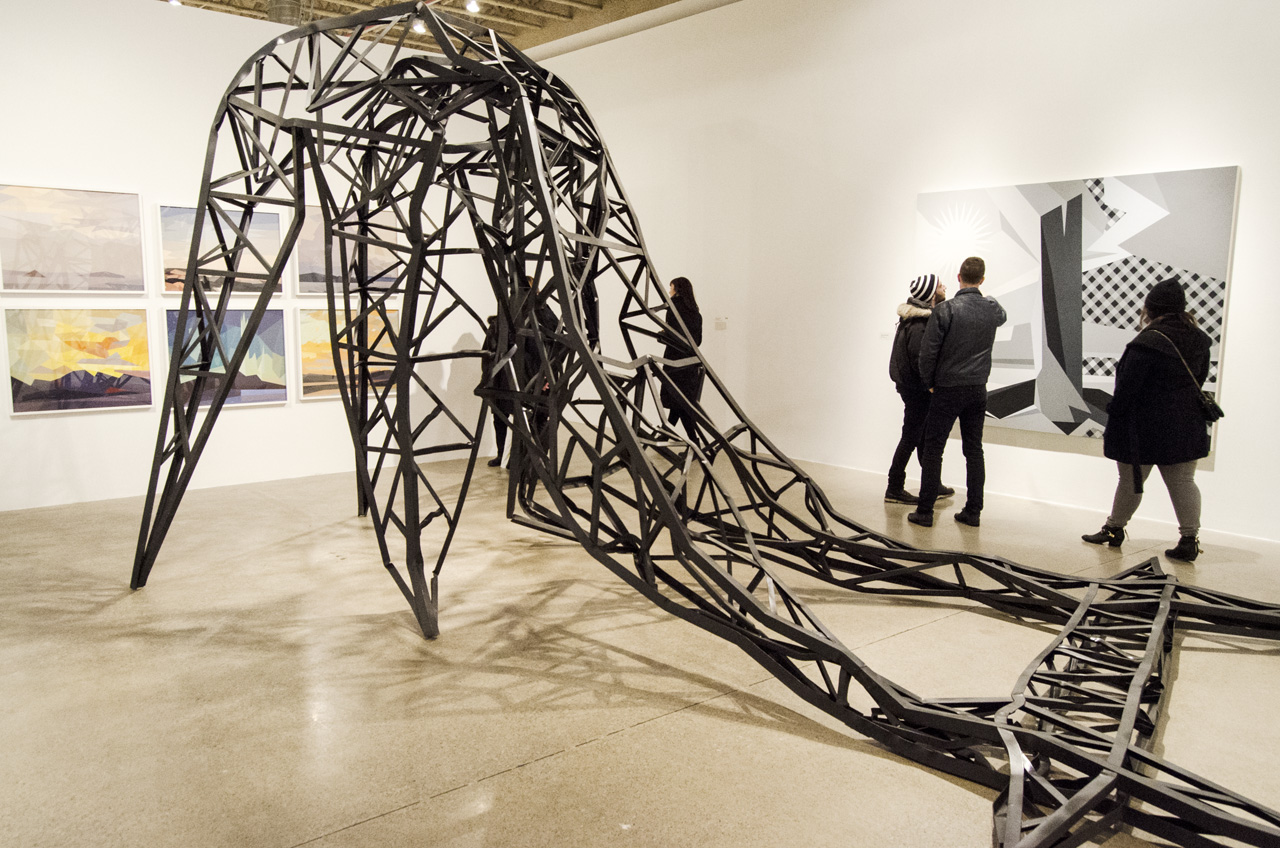 Installation view of “The Ice Storm” (2014) at the MOCCA
Installation view of “The Ice Storm” (2014) at the MOCCA
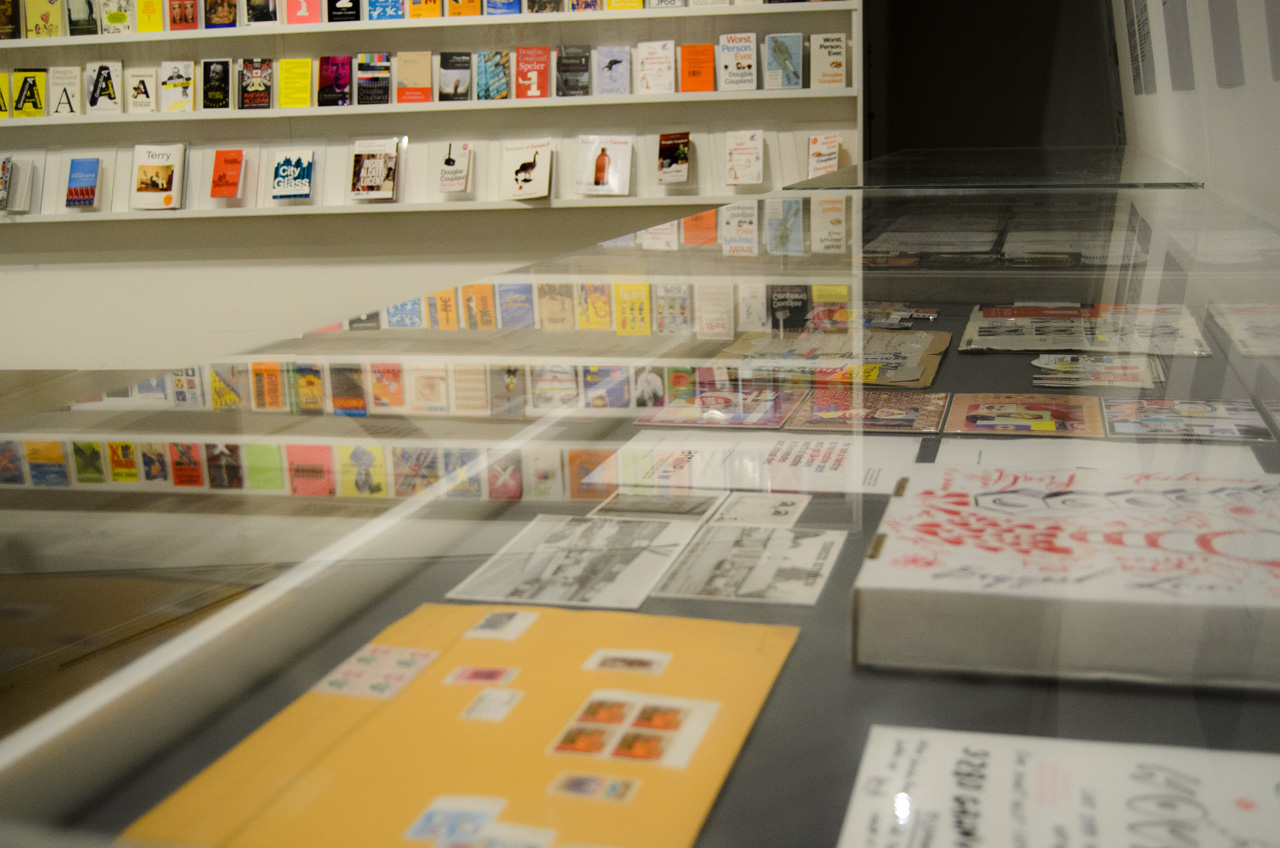 Detail of the Archives section at the ROM
Detail of the Archives section at the ROM
Text and photo: Elena Iourtaeva
*Exhibition information: MOCCA: January 31 – April 19, 2015, 952 Queen Street West, Toronto. Gallery hours: Tue – Sun: 11 a.m. – 6 p.m. ROM: January 31 – April 26, 2015, 100 Queen’s Park, Toronto. Gallery hours: Mon – Thur & Sat – Sun: 10 a.m. – 5:30 p.m., Fri: 10 a.m – 8:30 p.m.


